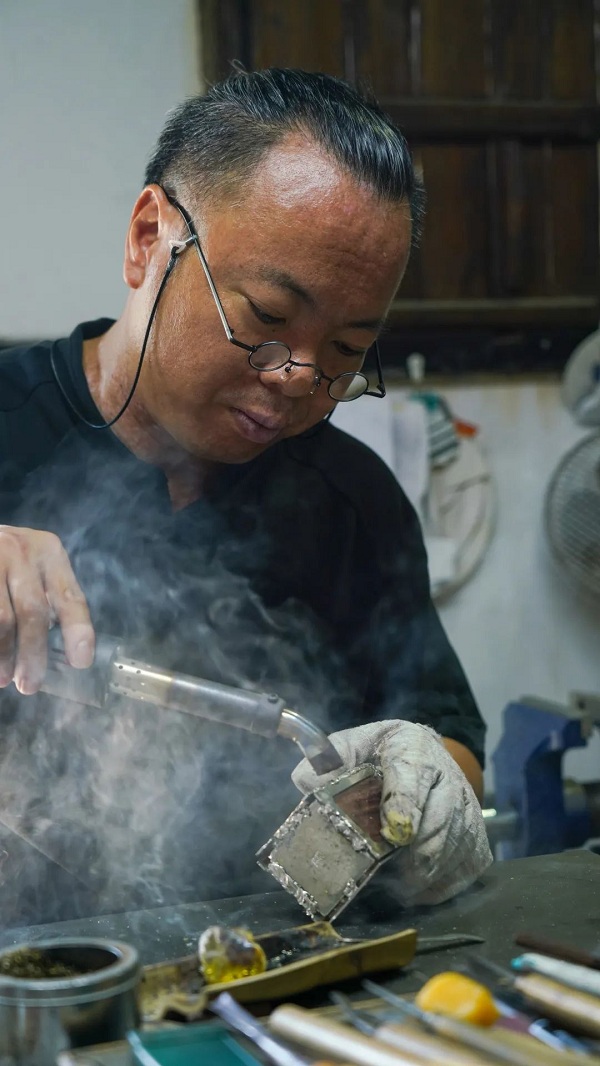
A craftsman welds pieces of tin. [Photo/WeChat account: gh_7f81881f4449]
Dongyang tin art has its origins in the Ming Dynasty (1368-1644). In Cailu village, Dongyang, almost every household can make tin ware, which was once a major industry in the village.
A number of daily utensils such as tin tea cans and tin heaters have been popular among people there since ancient times. Traditional tin works are mainly used for daily necessities, and some are also used during worship rituals.
Every step matters when making quality tin ware. Creating a tin carving requires multiple processes such as melting the tin, pressing plates, forging, filing, welding, painting, and pressing gold foil.
Welding requires a lot of skill. The joint should be welded firmly with a welding torch to be smooth and seamless. The quality of welding directly affects the quality of the final work.
A craftsman uses different tools to trim uneven surfaces to make the tin bright and smooth.
Hitting a work requires even force and continuous action to make the surface smooth.
Unlike mass-produced ones, each handmade tin ware is unique, making them popular among consumers.